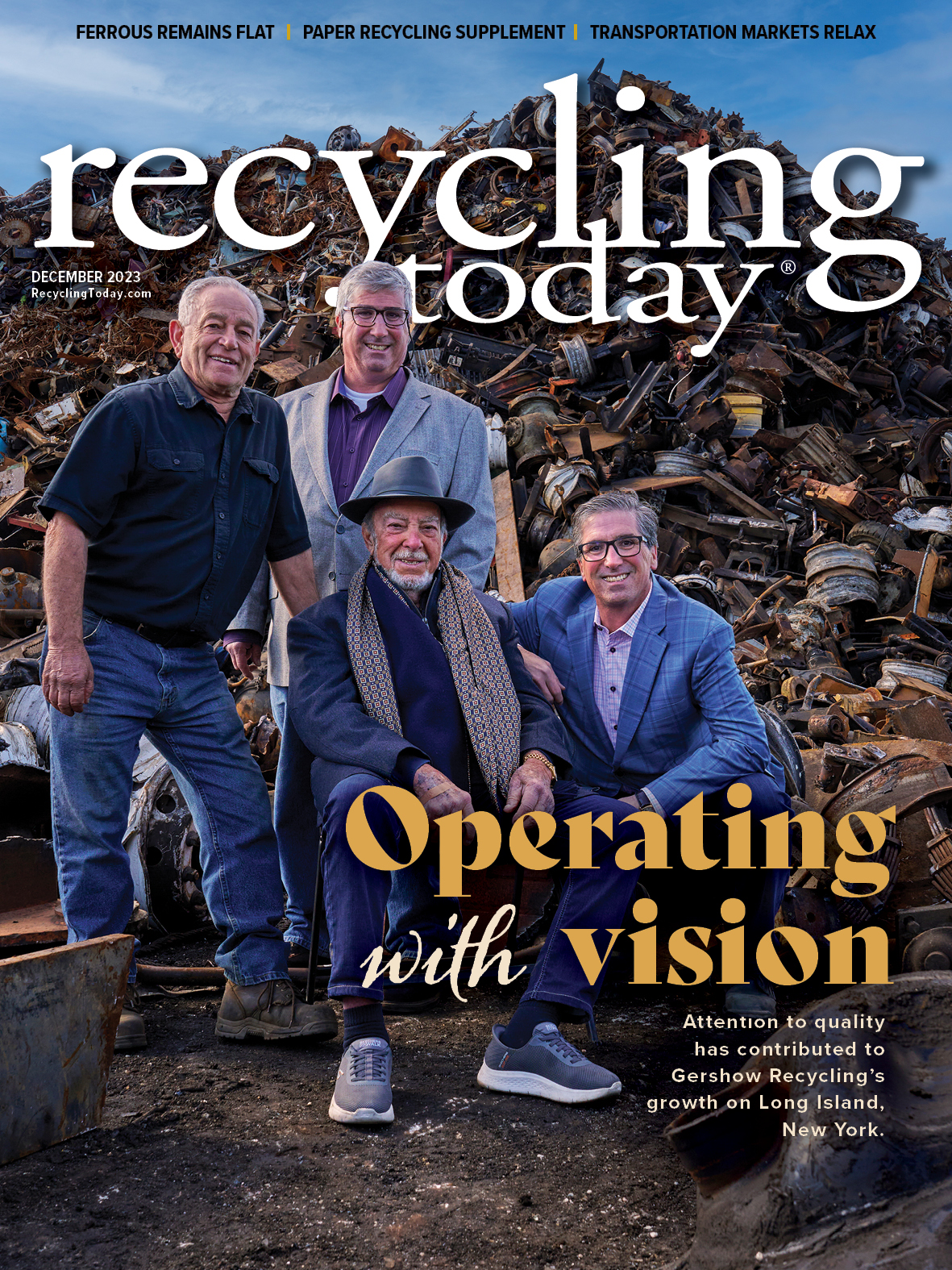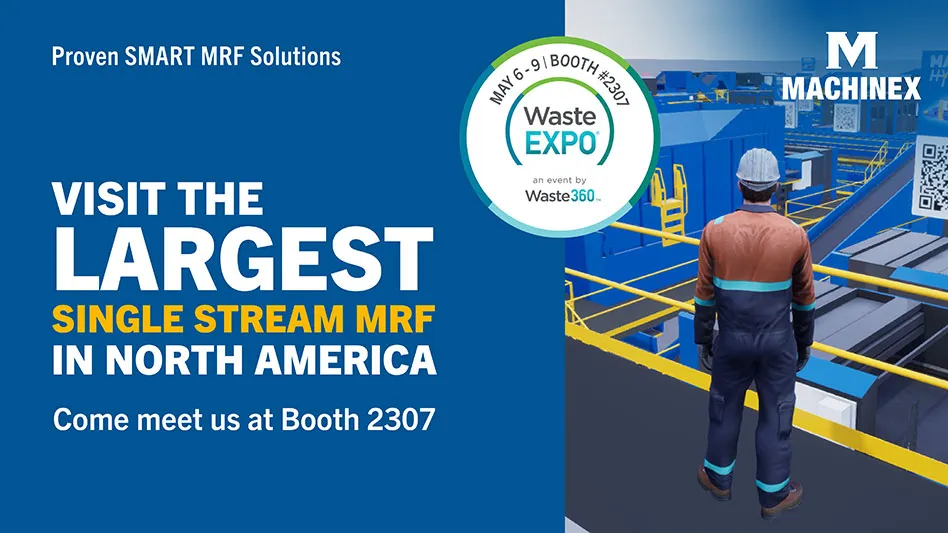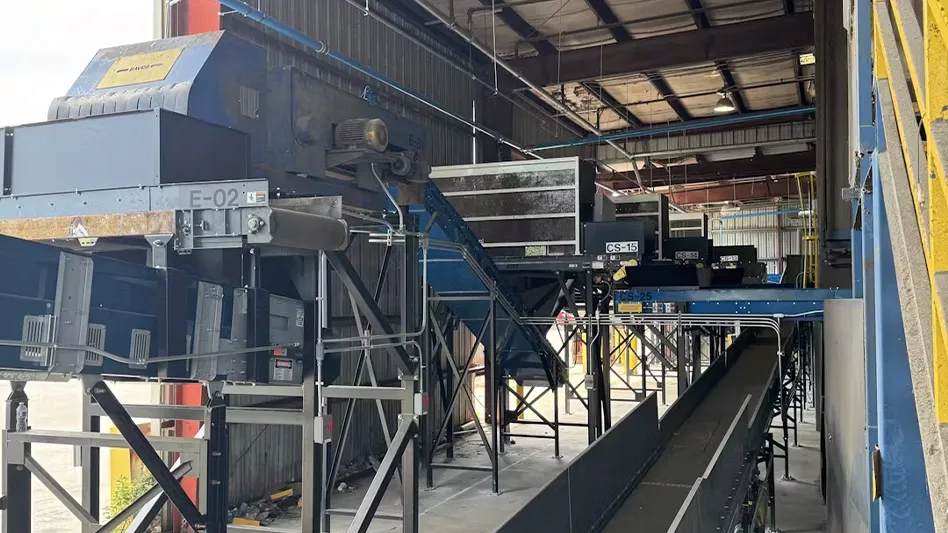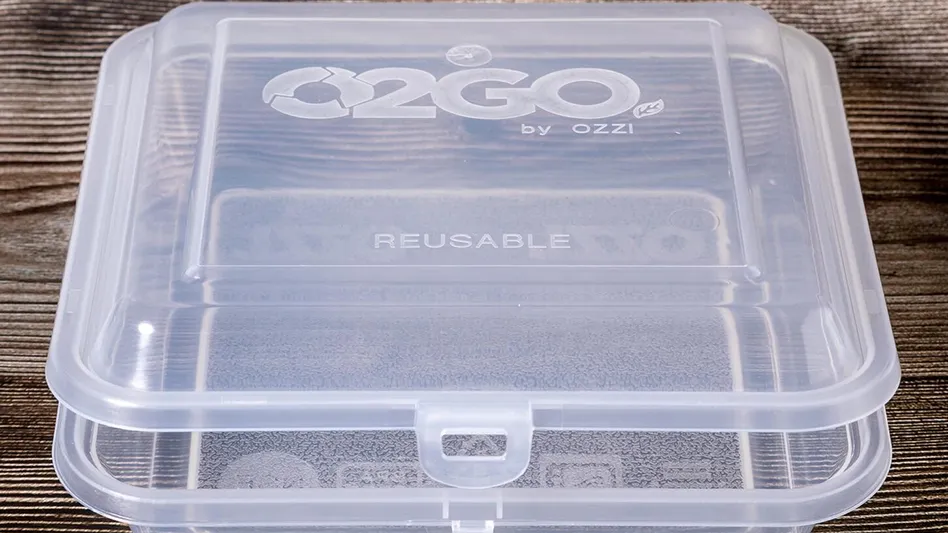
Bob Safford, senior key account manager at Kaeser Compressors USA in Fredericksburg, Virginia, calls an air compressor “the third child” of a material recovery facility (MRF).
“[Air compressors] seem to be forgotten about,” he said during the Compressor Management session at the MRF Operations Forum in Chicago in October. “I’m qualified to speak on this because I am the third child and I have three children. The rules get relaxed, the budget gets blown on the first two and, when it comes time to pay the piper, that’s sort of what happens with the compressors.”
In 15 years of working in business development and original equipment manufacturer (OEM) integration, service, sales and management in the air compressors space, Safford said he has seen the effects of poor placement and maintenance on this vital equipment.
“[Facility owners] being blown away at the end of the construction process by the price of compressors and where to put them is something we commonly see,” he said. “I don’t think anybody is running any facility without an air compressor, and it’s going to get more and more prevalent.”
Panel moderator Ryan Lawlor, project engineer at Melville, New York-based RRT Design & Construction, noted that now, more than ever, compressed air is critical to any MRF operation as it is required for robotic and optical sorters to function. “In our experience with MRFs, we’ve seen a lot of different integration methods, and the value of air has changed,” he said.
Safford added that the biggest issue facing facility operators is planning and budgeting not just for an air compressor but for an entire air compression system.
Setting up the system

in Chicago.
When considering an air compression system, Safford said placement should be the No. 1 priority.
“It should be placed in a clean environment for intake air,” he said. “You’re basically taking air, putting it into a compression chamber and that’s what’s feeding all your equipment that’s for automation, your optics and all that. I’ve been to your facilities, and your air is not clean there, so you’ve got to place [the air intake system] outside.”
While air intake is important for a healthy compressor, so is exhaust air. Safford noted the compression process creates heat, and excess heat is “the No. 1 thing that will kill an air compressor.”
Along with air quality, placement can help simplify maintenance. He cited examples of what not to do, such as installing a compressor underneath a conveyor.
When setting up a compressor system, Safford said the receiver must sit on a permanent and level concrete slab.
“As simple as it seems to have an air tank or receiver, if you get it too far away from the dryer, there’s going to be moisture issues,” he said. “There’s also going to be point-of-use, where you’re using high-impact demands, and there still needs to be some sort of receiver for those demands.”
He added that operators should work compressor redundancy into site design.
Power also is a concern when installing a compressor system, and Safford suggested planning for power needs when building or upgrading a facility, especially given the long lead times for components.
Air quality and proper filtration matter. “The optics need clean air, the valves need to be lubricated and, as soon as you start introducing moisture into those valves, it’s washing them out and there’s premature failures,” Safford said. “Systems are demanding more and more quality air, and there’s a lot of sizing and engineering work that goes in to do that and make sure it’s going to be proper.”
Condensate water is another factor to consider. Safford said a recent project he was working on was halted for months because of permitting issues related to water runoff.
“During the heat of compression, there’s a lot of moisture that’s made and that has to be drained,” he said. “It can be as much as 300 to 600 gallons a day on a 300-horsepower machine. … I highly encourage you to speak with a professional or someone that knows what’s going on within the compressor system, so when it comes time for the build and the permits, everybody’s thought of everything and has it together. If it’s something as simple as a drain line you didn’t think of, that could hold up a project.
“That condensate water that comes out of a compressor also is categorized as hazardous waste because, in the compression process, there is oil in that,” Safford continued, adding that if the Environmental Protection Agency finds out the system is improperly drained, a major violation with fines will be the result. “There are scrubbers for that, and things that need to be put in place when you have that much condensate coming out.”
Dangers in oversizing
Pipes in a compression system shouldn’t be overlooked in the MRF design process.
Piping needs to be sized correctly for the compression system to remain consistent as oversizing can lead to trouble.
“You need storage,” Safford said. “Where are you putting the storage in the design loop for the consistency of pressure throughout the whole system? … A lot of people throw horsepower at it. They say, ‘Well, we don’t really know what the plant’s going to use,’ and then they oversize. Oversizing is probably one of the worst things you can do for a compressor. It never allows the oil to get up to temperature to burn off the condensate that’s being created in the compression chamber.”
Safford recommended the company designing the air system perform an air demand analysis for the facility.

Why compressors fail
Safford said the main reason air compressors fail is because of heat.
“That’s the killer,” he said. “It’s because the oil gets overheated and there’s not proper lubrication of the system.”
Other factors that contribute to compressor failures are the dirty environment of a MRF, oversizing of the system and the lack of proper maintenance.
“Air gets taken … into the compression chamber, then it goes out through a cooling process for the discharge air, but also, the oil that’s going back into the compression chamber is cooled. So, what we see a lot of in these [MRF] environments where you have to have this equipment is all that dust, the particles, everything, gets sucked into the after-cooler, and it gets blocked,” Safford said. “You probably get high-temp alerts, and you’re shutting down. The reason it needs to be cooled is it’s using the oil.”
Safford compared an air compressor to a car and its usage to vehicle mileage.
“This is just 12 hours a day, going 60 miles per hour, and we typically like to run our compressors at 70 to 80 percent for optimal use,” he said. “To give an idea of what that would be in miles per year, that’s 202,000 miles on a five-day, 12-hour shift. That’s a million [miles] over five years, and we’ve seen compressors that haven’t been touched in five years. So, the maintenance is pivotal. But, if you’re not going to maintain it properly, then at least have it in the right environment.”
Dirty air is a primary contributor to the excessive heat that can shut down a compression system. Safford said if dirty air is constantly entering the compression chamber, the oil and aftercooler will be negatively affected.
“An air compressor is probably the most expensive thing that you can run in your facility for the energy that it uses,” he said. “A cure for failure is simple—just a properly designed system and routine maintenance. The cure for a shutdown is redundancy.”
He added that the biggest keys to success with a compression system are to design for it and maintain it and reiterated the importance of consulting with experts when questions arise.
“There’s probably more that goes into designing an air compressor system than you’d probably ever think,” Safford said. “That’s why using a professional to help you out is a good idea. We’ve seen what works in your facilities and what hasn’t worked as well.”

Explore the December 2023 Issue
Check out more from this issue and find you next story to read.
Latest from Recycling Today
- Novelis quarterly, full-year net sales down; CEO reports ‘strong improvements’
- Meeting the decarbonization challenge
- Cyclic Materials expands leadership team
- Paper cup acceptance at US mills reaches new milestone
- EPA announces $3B to replace lead service lines
- AMCS showcasing Performance Sustainability Suite at WasteExpo
- New Way and Hyzon unveil first hydrogen fuel cell refuse truck
- Origin Materials introduces tethered PET beverage cap





